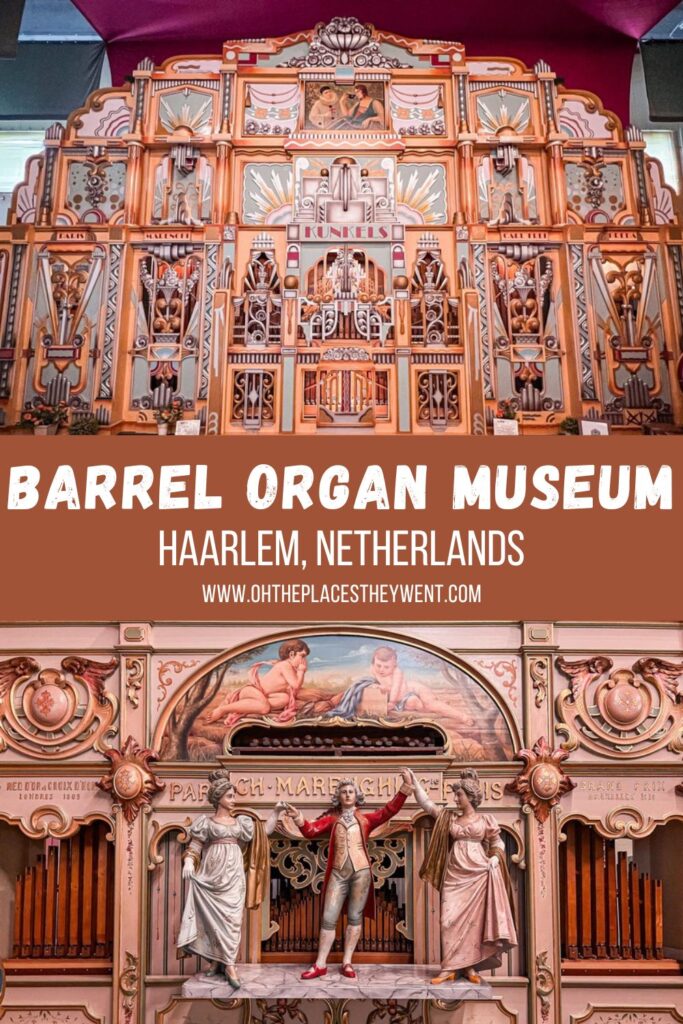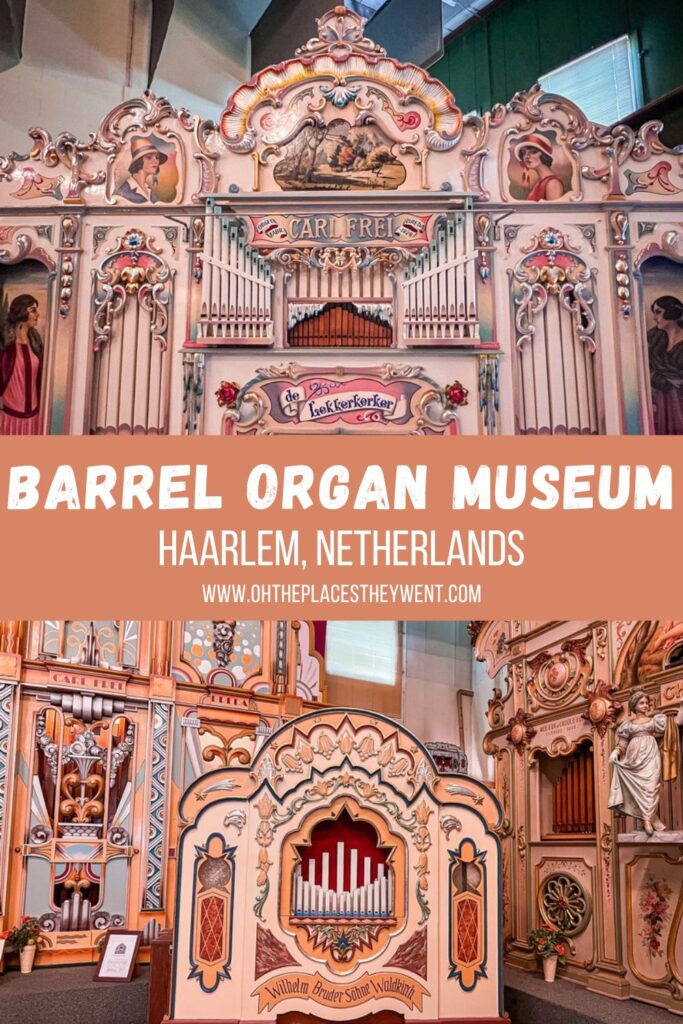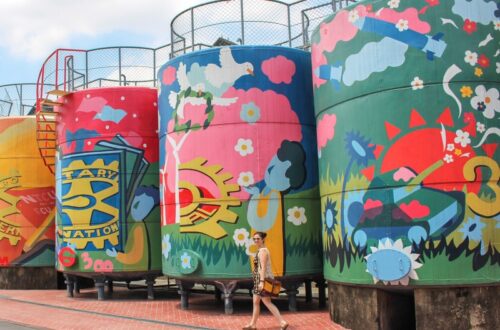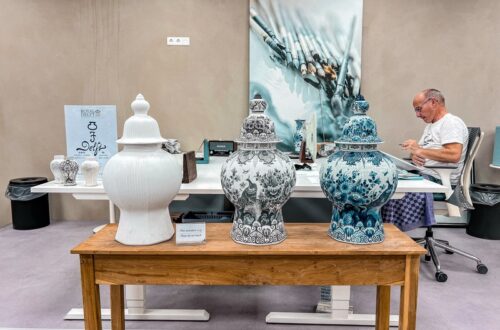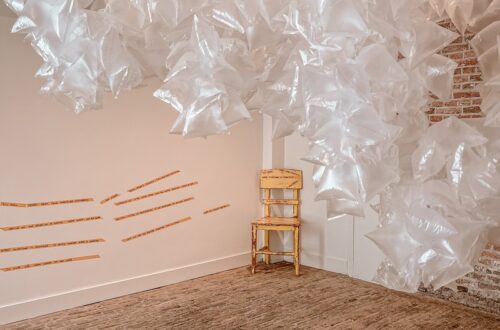The Super Secret Sunday Hangout in Haarlem, Netherlands
There’s something that happens each Sunday in Haarlem, Netherlands and while not a huge touristy draw, it has just the right number of locals to call it a pretty super secret but super kitschy and fun hangout spot. If you’re wondering what to do in Haarlem, Netherlands, this should be on your list and hopefully you’re visiting on a Sunday so you can see it.
The Barrel Organ Museum, or Draaiorgel Museum, is home to a unique collection of barrel organs that sit around a main space that is filled with tables and chairs. Take a seat any Sunday afternoon and you can enjoy a barrel organ concert.

Looking for something unique to do in Haarlem, Netherlands? This is it!
(This post contains affiliate links, which means I receive a certain percentage of a sale if you purchase after clicking at no cost to you. Thank you for your support.)
Basic Info
- Address: Kuppersweg 3, Haarlem, Netherlands, 2031EA
- Hours: Sunday 12:00pm ~ 6:00pm
- Website: http://www.draaiorgelmuseum.org/
- Admission: It’s FREE to enter, but there’s a little snack stand with beer, wine, coffee and juices and money goes to the volunteers that run the space. Get something, sit down, and help support this unique space.

What To Know
Managed by the Stichting Stadsorgel Haarlem “Het Kunkels Orgel”, this unique museum space was opened in 1969 in an old factory in Haarlem to preserve the Marenghi/Carl Frei organ and since then more have been restored, preserved, and added to the space.
You can see a collection of historical and just beautiful barrel organs, the oldest of which dates back to 1900. The organs were made for fairs, used in dance halls, or cafes, and were also street organs. You can see photos of the organs in action to get the feel for what it used to be like to listen and enjoy them. The Dutch street organ culture is quite unique to the Netherlands and since 2019 is even on the list of Intangible Dutch Heritage.

What To See
There are currently 15 barrel organs in various sizes to see, listen to, and enjoy. Take a seat and watch as they play music one by one but also, stand up and be sure to walk around the organs a bit. If you have kids, let them step in the back and watch how the organs are played. It’s a lot of fun for them.
Here are just a few of the beautiful barrel organs you can see and listen to when you visit.

De Lekkerkerker
De Lekkerkerker is the first 90-key organ made by the famous organ building Carl Frei. The client was a dance salon owner in Lekkerker. Unfortunately, the organ didn’t get to enjoy a very long carrier as a dance organ, but was adapted for street use in the early 1930s and was used in the streets of Rotterdam. Since 1991, “De Lekkerkerker” has been a Dutch Monumental Cultural Heritage and protected by the Ministry of Education, Culture and Science.

De Gouwe
Originally a Gavioli dance organ, which was renovated by Koenigsberg in 1922, it ended up in the dance hall of Muus ter Meer in Zaandam. Around 1937, a fire broke out in the cafe and the organ suffered significant damage. Carl Frei purchased it and converted it into a type 90 Carl Frei organ, his final renovation in the Netherlands.
In 1942, playing street organs on the streets was banned by the German occupiers and the organ was set to Rotterdam. In the 1950s, it ended up in Amsterdam but again suffered a collision and had to be restored again and in the 1980s it took up residence in the Heineken Experience in Amsterdam.
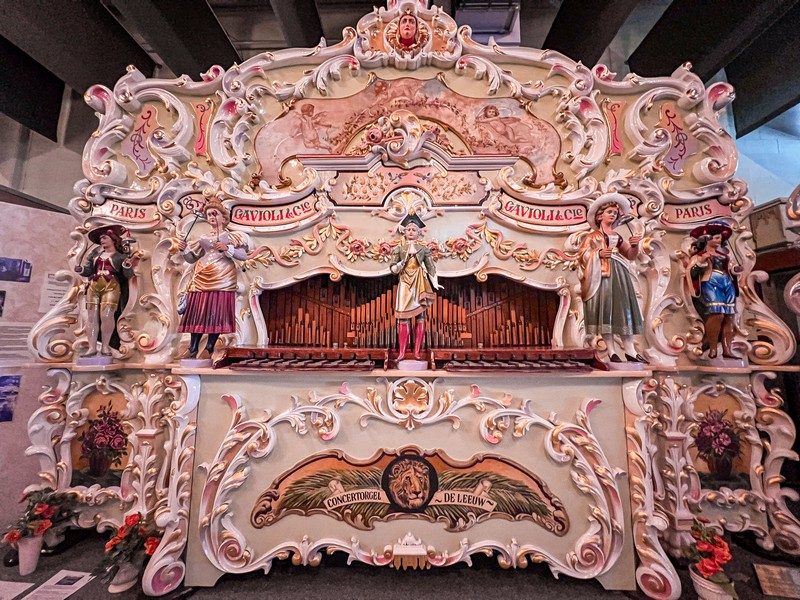
Gavioli Concertorgel De Leeuw.
The Lion is a special type of Gavioli 89-III and was delivered in April of 1904 from the factory on Rue de Bercy in Paris where Gavioli was based from 1860 to 1912. The organ has 89 keys and 4 registers and it is one of the few Gavioli organs where the bells of the trombone register are made of brass instead of wood.
Originally built for a dance hall in Paris, it was sold to a Dutch fair company called Hommerson in Breda within 10 years and was played with films. It became pretty dilapidated during WWII but a group swooped in to save the beautiful baroque-style facade with five beautiful wooden organ statues.
De Kunkels-Mortier
Between 1898 and 1954, the company Mortier was active in Antwerp and built organs for dance venues. During the 60 years of its existence, the factory delivered hundreds of organs for dance halls in Belgium and the south of the Netherlands. These organs were often so large that they covered the entire back wall of a dance hall, a bit similar to this one.
The organ here was built shortly before the First World War and played for years in a Belgian dance hall. After a complete restoration by the company Verbeeck, Sint Job in ‘t Goor, it has been in the museum since 1981. The Kunkels-Mortier has 84 keys and 11 registers. Of course the organ has a lot of dance music. Quick quick slow, back to the good old twenties.

Het Kunkelsorgel
The Kunkels organ was built in 1909 by the Marenghi company in Paris and played in the dance hall “Keizershof” in Antwerp. Around 1930, the organ builder Carl Frei in Breda completely rebuilt the organ on behalf of the fairground operator Kunkels in Roermond and it was fitted with a new front in Art Deco style. This front is 9 meters long and almost 6 meters high. That’s how it played for years in Kunkels’ dance tent.
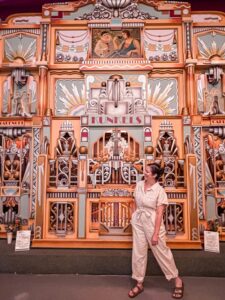
During the Second World War, the organ suffered considerable damage and afterwards remained in a leaky shed in a meadow near Roermond. A group of Haarlem organ enthusiasts heard about this and in 1958 took the initiative to restore the organ. The organ has been on display in our museum since 1969.
The Kunkels organ has 112 keys, 14 registers and over 800 pipes, making it the largest concert organ in Europe. In 2001 the organ was musically completely overhauled and in 2004 the Art Deco front, which is special for barrel organs, was restored
In 2007, the beautiful organ and its original music repertoire were designated by the Ministry of Education, Culture and Science as a protected object within the meaning of Article 2 of the Cultural Heritage Preservation Act.

De Pod
Built in 1935 by Carl Frei in Breda, the organ was built on behalf of the Amsterdam organ rental company Willem van Jaaren. After WWII, it was purchased by the Perlee company in Rotterdam and rented out for parties. It has a beautiful exterior. The Pod has even been in popular films and was used at the wedding of Prince Willem Alexander and Maxima in 2002.
When you’re in Haarlem, Netherlands, if it happens to fall on a weekend, be sure to stop by and take advantage of this unique experience in the Netherlands. You can’t just find these barrel organs anywhere anymore so it’s a one-of-a-kind experience to enjoy.
Did you like this point? Pin iT!
